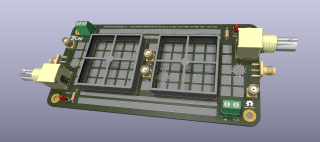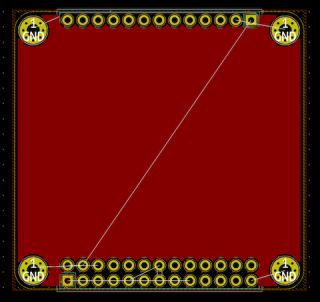Today I finalzied the designed for my new Raspberry Pi Zero-based radio node. Designed around SA818 and CM108B sound codec, will replace my old dead-bug style radio node that I used for so many years.
This is an intermediate version before my I2S design which will also discard the use of the discontinued SA818. Although wonderful for all ham radio UHF/VHF small projects, SA818 is not produced anymore so I have to find a replacement. Moreover I was not a very big fan of the spectrum profile of that transceiver. For now I will use RDA1846. I still own 10 RDA1846 chips, which is the transceiver inside SA818, but these are discontinued too and I need an alternative for those too.

Mobile radio node, designed as a hat for Raspberry Pi Zero. Bulky SA818 on the left. This is using CM108B USB codec and svxlink that will interact with CODEC via hidraw. Image generated in KiCad v 9.0.3 3D viewer. I actually like the quality of the 3D rendering in KiCad. But for best results use WRL files, not STEP.
It is quite puzzling the lack of quality transceivers chips that support FM. I assume that there is a very small market for such devices and, probably, I have to focus mostly on chinese companies that might still manufacture such chips for cheap handhelds like Baofeng, Quansheng and like. For now I still have to find a comparable device like RDA1846 but maybe I have to think a bit outside the box and expand the options.
Time will tell.
Designed in KiCad.
Bye for now.






















